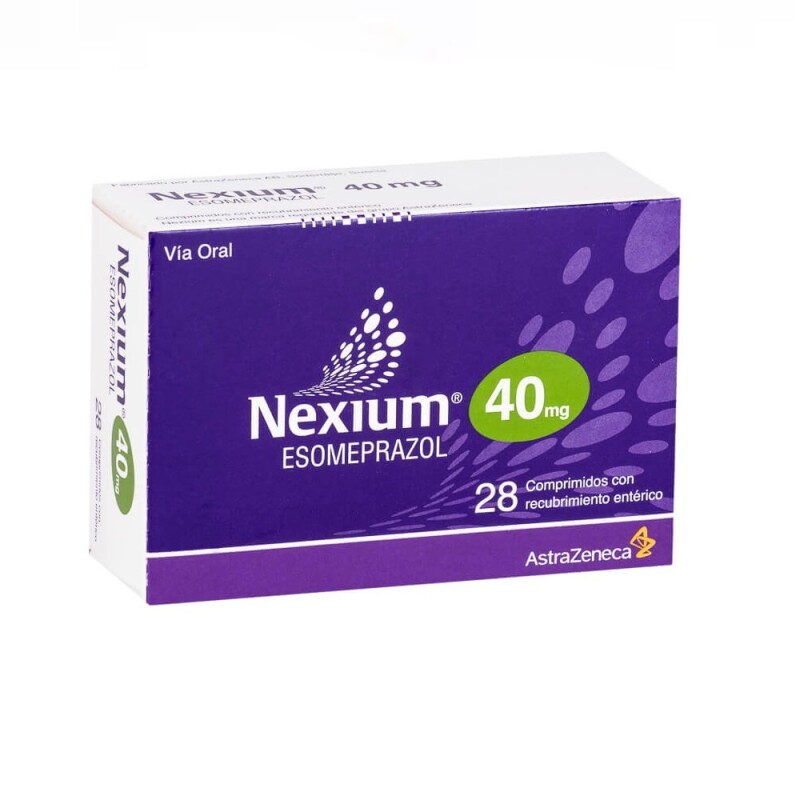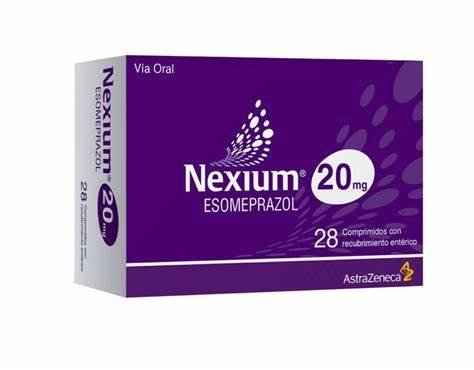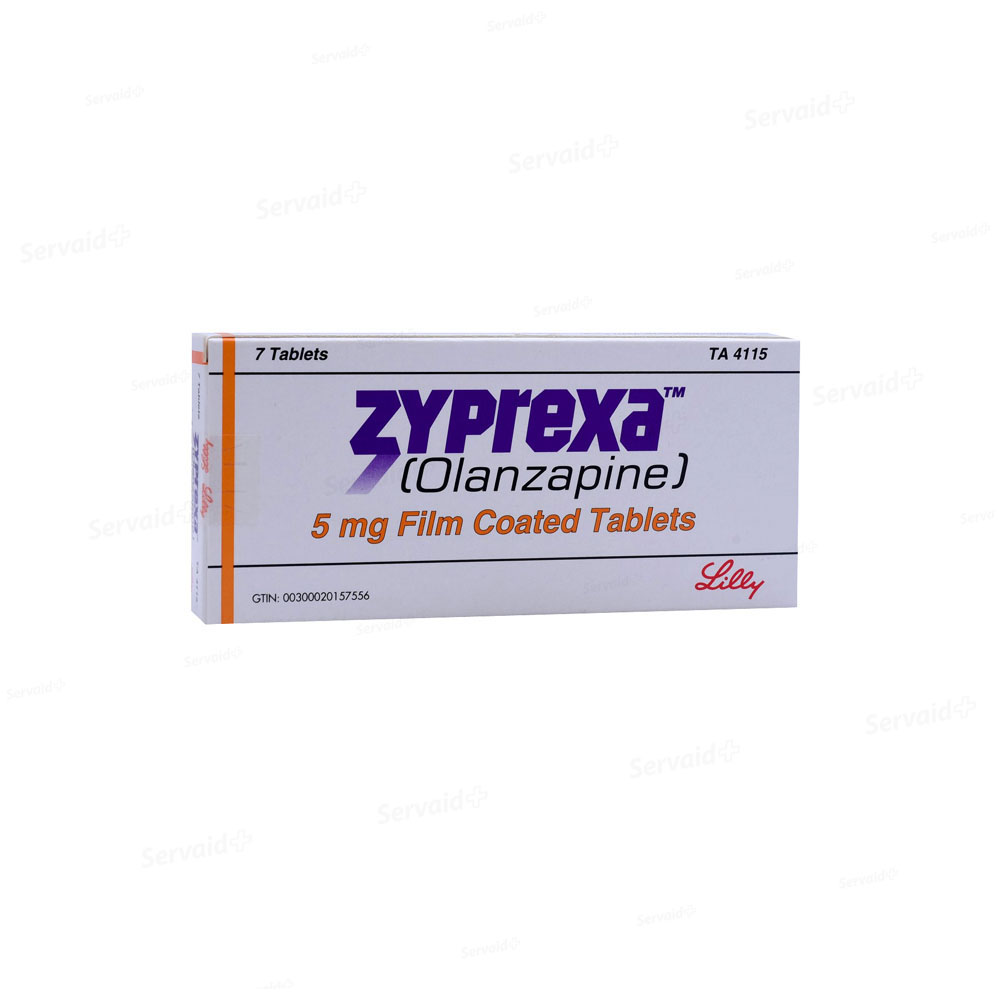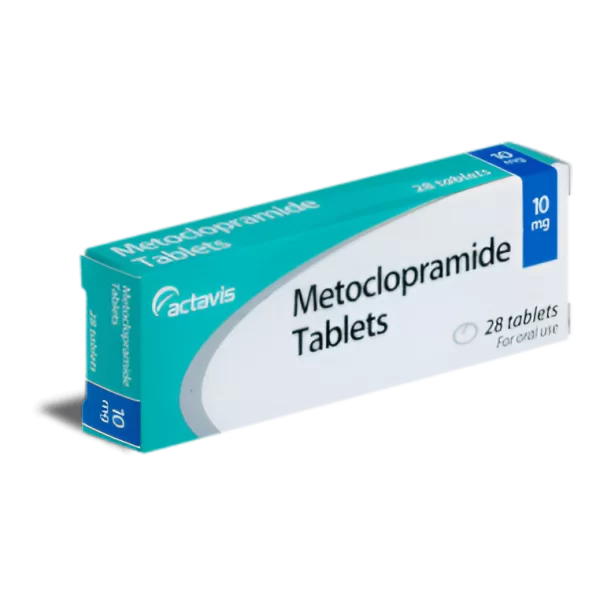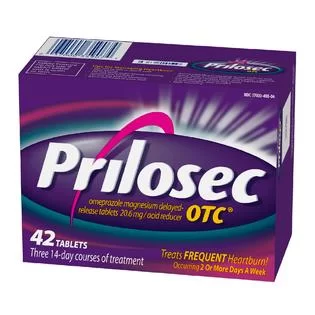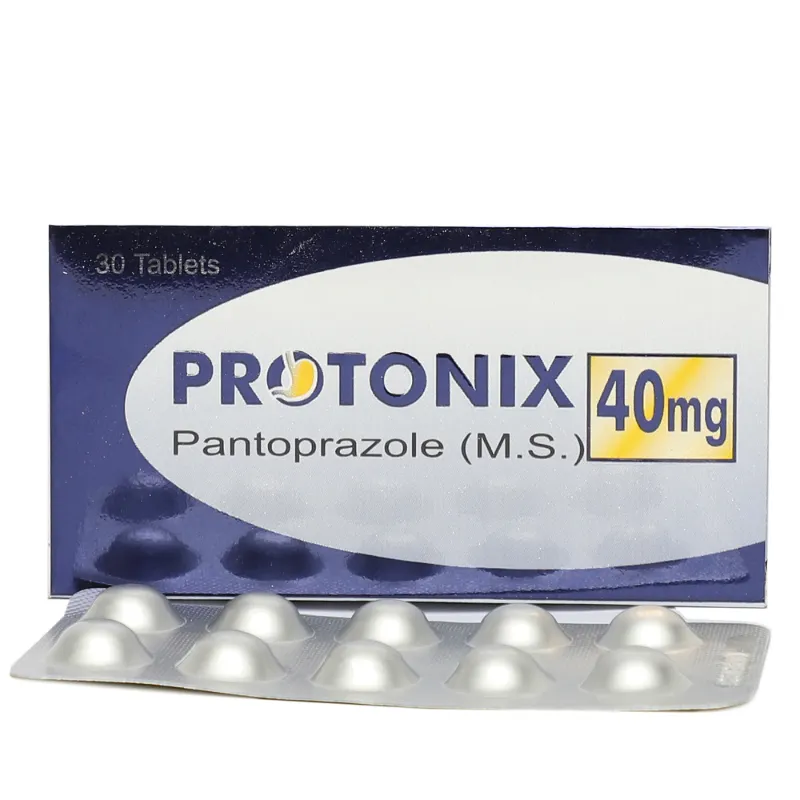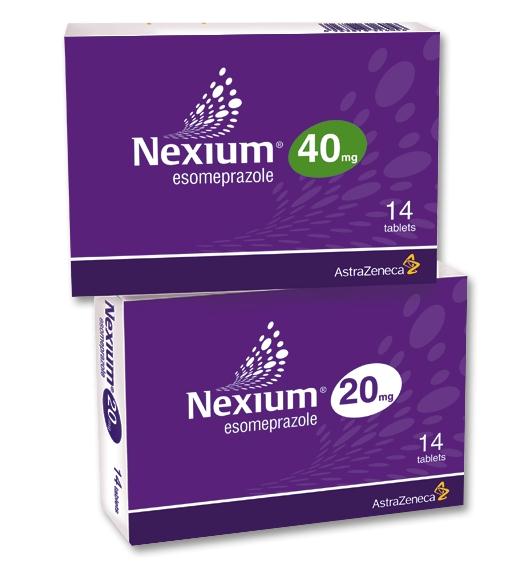
Nexium
Nexium - 40mg
| Product | Per Pill | Savings | Per Pack | Order |
|---|---|---|---|---|
| 60 pills | $0.81 | $48.74 | Buy Now | |
| 90 pills | $0.69 | $11.11 | $73.10 $61.99 | Buy Now |
| 120 pills | $0.63 | $22.22 | $97.47 $75.25 | Buy Now |
| 180 pills | $0.57 | $44.45 | $146.21 $101.76 | Buy Now |
| 270 pills | $0.52 | $77.78 | $219.31 $141.53 | Buy Now |
| 360 pills | $0.50 | $111.11 | $292.41 $181.30 | Buy Now |
Nexium - 20mg
Overview
General Introduction Nexium (esomeprazole) is a proton pump inhibitor (PPI) used to treat gastroesophageal reflux disease (GERD), erosive esophagitis, and other conditions involving excessive stomach acid. Approved by the FDA in 2001, Nexium works by reducing the amount of acid produced in the stomach, providing relief from acid-related symptoms and promoting healing of the esophagus.
Key Benefits and Unique Properties
- Effective Acid Reduction: Significantly reduces stomach acid production, providing relief from heartburn and other GERD symptoms.
- Healing of Erosive Esophagitis: Promotes healing of the esophagus damaged by stomach acid.
- Once-Daily Dosing: Convenient once-daily dosing for most indications.
- Long-Lasting Relief: Provides up to 24 hours of acid control.
- Pediatric Use: Approved for use in children aged 1 year and older.
Effectiveness Clinical studies have shown that Nexium is highly effective in reducing gastric acid secretion and providing relief from GERD symptoms. It significantly improves the healing rates of erosive esophagitis and maintains symptom control with long-term use. Many patients experience relief within the first few days of treatment.
Safety and Tolerability Nexium is generally well-tolerated, with common side effects including headache, diarrhea, nausea, and abdominal pain. Rare but serious side effects can include bone fractures, kidney issues, and Clostridium difficile infection. Regular monitoring and patient education can help manage these risks and ensure safe use.
Indications for Use
Diseases and Conditions Treated Nexium is primarily indicated for the treatment of gastroesophageal reflux disease (GERD), erosive esophagitis, and Zollinger-Ellison syndrome. It is also used for the prevention of gastric ulcers caused by NSAID use and for the eradication of Helicobacter pylori infection in combination with antibiotics. By reducing stomach acid production, Nexium helps manage these conditions and provides symptom relief.
Primary Symptoms and Indications
- GERD Symptoms: Effective in reducing heartburn, regurgitation, and other symptoms associated with GERD.
- Erosive Esophagitis: Promotes healing of the esophagus damaged by stomach acid.
- Zollinger-Ellison Syndrome: Manages symptoms by significantly reducing acid production.
- Helicobacter pylori Eradication: Used in combination with antibiotics to treat H. pylori infection, reducing the risk of ulcers.
Dosage and Administration
Dosage and Intake The recommended dose for Nexium varies depending on the condition being treated. For GERD, the typical dose is 20 mg or 40 mg once daily for 4 to 8 weeks. For the maintenance of healing of erosive esophagitis, the dose is 20 mg once daily. For Zollinger-Ellison syndrome, the dose can range from 40 mg twice daily to higher doses as needed. The medication should be taken at least one hour before meals, and the capsules should be swallowed whole.
Timing and Frequency Nexium is typically taken once daily, one hour before meals. For certain conditions, such as Zollinger-Ellison syndrome, it may be taken twice daily. Consistent timing helps maintain steady blood levels of the medication, optimizing its effectiveness and minimizing side effects. Patients should follow their healthcare provider’s instructions regarding the timing and frequency of dosing.
Additional Recommendations
- Hydration: Maintain adequate hydration to support overall health and well-being.
- Missed Dose: If a dose is missed, take it as soon as remembered unless it is almost time for the next dose. Do not double the dose to make up for the missed one. Continue with the regular dosing schedule to maintain consistent blood levels.
Mechanism of Action
Description of Mechanism Nexium works by inhibiting the H+/K+ ATPase enzyme system (proton pump) in the gastric parietal cells. This enzyme is responsible for the final step in the production of gastric acid. By blocking this enzyme, Nexium effectively reduces the production of stomach acid, providing relief from acid-related symptoms and promoting healing of the esophagus.
Biochemical Processes The primary action of Nexium is the irreversible binding to the proton pump in the stomach lining. This binding prevents the secretion of hydrogen ions into the stomach, thereby reducing gastric acidity. This biochemical process results in a significant and sustained reduction in stomach acid production, allowing for the treatment and management of acid-related conditions.
Physiological Effects
- Organ and System Functions: Reduces gastric acidity, leading to relief from heartburn and other GERD symptoms. Promotes healing of erosive esophagitis by reducing acid damage to the esophagus.
- Therapeutic Effects: Provides long-lasting symptom relief and promotes healing of the esophagus and stomach lining. Helps manage conditions like Zollinger-Ellison syndrome by controlling excessive acid production.
Composition
Active Ingredients The active ingredient in Nexium is esomeprazole magnesium, a proton pump inhibitor that effectively reduces stomach acid production. Esomeprazole is the S-isomer of omeprazole, which enhances its effectiveness and provides more consistent acid control compared to its racemic counterpart.
Inactive Ingredients The inactive ingredients in Nexium capsules include glyceryl monostearate, hydroxypropyl cellulose, hypromellose, magnesium stearate, methacrylic acid copolymer, polysorbate 80, sucrose, and others. These ingredients help stabilize the formulation and ensure proper absorption and efficacy of the medication.
Side Effects
General Introduction Understanding potential side effects is crucial for the safe use of Nexium. Patients should be aware of both common and serious side effects to monitor their health effectively while on the medication.
Possible Side Effects
- Common Side Effects: Headache, diarrhea, nausea, abdominal pain, and flatulence are commonly reported. These side effects are generally mild and transient.
- Less Common Side Effects: Some patients may experience dry mouth, dizziness, or constipation.
- Serious Side Effects: Rare but serious side effects include bone fractures, kidney issues (interstitial nephritis), and Clostridium difficile infection. Immediate medical attention is required if any serious side effects occur.
Frequency and Severity Common side effects are generally mild and do not significantly interfere with daily activities. Severe side effects are rare but can be serious, necessitating immediate medical intervention. Regular follow-ups and patient education on correct usage can minimize risks.
Prevention of Side Effects
General Introduction Preventing side effects is key to maximizing the therapeutic benefits of Nexium. By following preventive measures, patients can reduce the likelihood of experiencing adverse reactions.
Tips for Prevention
- Follow Dosage Instructions: Use Nexium as directed to avoid excessive use, which can lead to adverse effects like severe kidney issues.
- Stay Hydrated: Adequate hydration can help reduce dizziness and other side effects.
- Consult Healthcare Providers: Regular consultations can help manage and prevent adverse reactions. Inform your healthcare provider about any other medications or supplements to avoid potential interactions.
Contraindications
General Introduction Understanding contraindications ensures the safe use of Nexium. Certain conditions and diseases may preclude the use of this medication.
Conditions and Diseases
- Severe Hepatic Impairment: Nexium is contraindicated in patients with severe hepatic impairment due to the risk of accumulation and increased side effects.
- Hypersensitivity: Patients with a known hypersensitivity to esomeprazole or any of its components should not use this medication. Allergic reactions can include symptoms such as rash, itching, swelling, and difficulty breathing.
Warnings/Precautions
General Introduction Following precautions is essential to ensure the safe and effective use of Nexium. Patients should be informed about potential risks and how to mitigate them.
Important Warnings
- Bone Fractures: Long-term use of Nexium has been associated with an increased risk of bone fractures, particularly in the hip, wrist, and spine. Patients should be advised to maintain adequate calcium and vitamin D intake.
- Hypomagnesemia: Nexium can cause low magnesium levels, especially with prolonged use. Symptoms include muscle cramps, seizures, and arrhythmias. Regular monitoring of magnesium levels is recommended.
Precautions
- Regular Monitoring: Regular check-ups with healthcare providers are essential to monitor for potential side effects, especially with long-term use.
- Patient Education: Patients should be educated on the proper use of Nexium, recognizing signs of serious side effects, and when to seek medical help.
Missed Dose
General Introduction Proper management of missed doses helps maintain effective symptom control. Patients should be aware of how to handle missed doses to avoid disruptions in their treatment regimen.
What to Do If a Dose Is Missed If a dose is missed, it should be taken as soon as remembered unless it is almost time for the next dose. In such cases, the missed dose should be skipped, and the patient should continue with the regular dosing schedule. It is important not to double the dose to make up for the missed one, as this can increase the risk of side effects.
Tips for Adherence
- Reminders: Use alarms or medication organizers to help remember to take Nexium as prescribed.
- Routine: Take the medication at the same time each day, preferably one hour before a meal, to develop a routine and reduce the chances of missing a dose.
Drug Interaction
General Introduction Understanding potential drug interactions helps in avoiding adverse effects and ensuring the effectiveness of Nexium. Patients should be aware of common interactions and how to manage them.
Examples of Interactions
- Clopidogrel: Concurrent use with clopidogrel can reduce the effectiveness of clopidogrel, increasing the risk of cardiovascular events.
- Warfarin: Nexium can increase the effect of warfarin, leading to an increased risk of bleeding. Monitoring INR levels is recommended.
How to Avoid Negative Interactions
- Medication Review: Regularly review all medications with healthcare providers to identify and manage potential interactions before they cause adverse effects.
- Inform Healthcare Providers: Always inform healthcare providers of all medications being taken, including over-the-counter drugs and supplements, to ensure safe and effective use of Nexium.
Overdose
Symptoms of Overdose Overdosing on Nexium can lead to symptoms such as confusion, drowsiness, blurred vision, rapid heartbeat, nausea, and sweating. These symptoms can vary in severity depending on the amount of medication ingested. Immediate medical attention is necessary if an overdose is suspected to prevent serious complications and ensure prompt treatment.
Actions to Take in Case of Overdose
- Immediate Measures: Seek emergency medical attention or call a poison control center immediately if an overdose is suspected. It is important to provide healthcare professionals with information about the amount of medication taken and the time of ingestion.
- First Aid: While waiting for medical help, provide supportive care to the affected individual. This includes maintaining an open airway, monitoring vital signs, and keeping the person comfortable. Do not induce vomiting unless instructed by a healthcare professional. In a medical setting, treatments may include gastric lavage, activated charcoal administration, and symptomatic management to address specific overdose symptoms.
Pharmacokinetics
Absorption Nexium is rapidly absorbed following oral administration, with peak plasma concentrations occurring within 1 to 2 hours. The bioavailability increases with repeated doses, reaching approximately 90% after several days. The absorption of Nexium is not significantly affected by food intake, although taking it one hour before meals optimizes its effectiveness.
Distribution Once absorbed, Nexium is widely distributed throughout the body, with a volume of distribution of approximately 16 liters. It is highly bound to plasma proteins, primarily albumin, which facilitates its transport to the target tissues. The medication’s distribution characteristics ensure that it reaches the sites of action quickly and effectively, providing prompt relief from acid-related symptoms.
Metabolism Nexium is extensively metabolized in the liver by cytochrome P450 enzymes, primarily CYP2C19 and CYP3A4. It undergoes extensive first-pass metabolism, resulting in the formation of inactive metabolites. The metabolism of Nexium ensures that it is effectively cleared from the body, preventing accumulation and potential toxicity.
Elimination The metabolites of Nexium are primarily excreted via the urine, with approximately 80% of the dose recovered in the urine and the remainder excreted in the feces. The elimination half-life is approximately 1 to 1.5 hours, supporting once-daily dosing. This elimination profile ensures consistent therapeutic effects and minimal risk of accumulation with daily use.
Dosage Forms
Available Forms and Dosages Nexium is available in several dosage forms, including delayed-release capsules (20 mg and 40 mg), packets for oral suspension (2.5 mg, 5 mg, 10 mg, 20 mg, and 40 mg), and injectable form (20 mg and 40 mg). These various forms provide flexibility in administration, catering to different patient needs and preferences.
Advantages of Each Form
- Delayed-Release Capsules: Convenient and easy to administer, suitable for once-daily dosing. They provide consistent acid control and are effective for both short-term and long-term treatment.
- Oral Suspension: Ideal for patients who have difficulty swallowing capsules. The suspension provides the same efficacy as the capsule form, ensuring effective acid control.
- Injectable Form: Used in hospital settings for patients who cannot take oral medications. It provides rapid and effective acid control in acute situations.
Pregnancy and Breastfeeding
Safety of Use The safety of Nexium during pregnancy and breastfeeding has not been fully established. Animal studies have shown some adverse effects on the fetus, but there are no adequate and well-controlled studies in pregnant women. The medication should be used during pregnancy only if the potential benefits justify the potential risks to the fetus. Healthcare providers should carefully evaluate the risks and benefits before prescribing Nexium to pregnant women.
Recommendations for Pregnant and Nursing Mothers
- Pregnancy: Use Nexium with caution during pregnancy, particularly in the first trimester. Pregnant women should consult their healthcare provider before starting or continuing this medication. Comprehensive risk-benefit analysis is essential to ensure the safety of both mother and child.
- Breastfeeding: It is not known whether Nexium is excreted in human milk. Due to the potential for serious adverse reactions in nursing infants, a decision should be made whether to discontinue nursing or discontinue the drug, taking into account the importance of the drug to the mother. Nursing mothers should consult their healthcare provider to weigh the benefits and risks.
- Consultation: Pregnant and nursing mothers should have regular consultations with their healthcare provider to monitor their condition and the health of their baby. Adjustments to the treatment plan may be necessary based on the mother’s and baby’s health status.
Storage Conditions
Storage Recommendations Nexium should be stored at room temperature between 20°C to 25°C (68°F to 77°F). The medication should be kept in its original container, tightly closed, and out of reach of children. Protecting the medication from light and moisture helps maintain its stability and effectiveness. These storage conditions ensure that the medication retains its potency throughout its shelf life, providing consistent therapeutic effects.
Temperature and Other Conditions
- Temperature: Avoid storing Nexium in extreme temperatures (above 30°C or below 15°C). High temperatures can degrade the active ingredient, while low temperatures can affect the tablet’s integrity.
- Moisture Protection: Keep the medication away from high humidity environments such as bathrooms. Exposure to moisture can cause the tablets to break down or lose potency.
- Shelf Life: Check the expiration date on the packaging and do not use the medication past this date. Proper adherence to storage guidelines ensures the medication remains effective throughout its shelf life. If the medication shows any signs of deterioration, such as changes in color or texture, it should be discarded.
Clinical Trials and Efficacy
Overview of Clinical Trials Nexium has been evaluated in numerous clinical trials to assess its efficacy and safety in treating gastroesophageal reflux disease (GERD), erosive esophagitis, and other acid-related conditions. These studies typically involve large patient populations with various demographics and conditions. The trials are designed to measure improvements in symptoms, healing rates of erosive esophagitis, and overall quality of life. The results consistently demonstrate the medication’s ability to provide significant relief from acid-related symptoms, supporting its use in clinical practice.
Key Findings and Conclusions
- Efficacy: Clinical trials consistently show that Nexium significantly reduces gastric acid secretion, provides relief from GERD symptoms, and promotes healing of erosive esophagitis. These findings highlight the medication’s effectiveness in managing acid-related conditions and enhancing patients’ quality of life.
- Safety: The safety profile of Nexium is well-documented, with a low incidence of severe side effects when used as directed. Long-term studies confirm its tolerability and continued effectiveness over extended periods. Patients generally experience minimal side effects, making it a reliable and safe treatment option for chronic conditions.
- Comparison: Nexium’s efficacy is comparable to other proton pump inhibitors and superior to placebo. It provides an effective alternative or adjunctive therapy for patients who need additional control of their acid-related symptoms. This makes it a valuable option in the management of gastroesophageal reflux disease and other related conditions.
Conclusion
Summary of Key Points Nexium (esomeprazole) is an effective and well-tolerated medication for managing gastroesophageal reflux disease (GERD), erosive esophagitis, and other acid-related conditions. Its mechanism of action involves inhibiting the proton pump in the stomach lining, reducing acid production and providing long-lasting relief from symptoms. Clinical trials have demonstrated its ability to provide significant relief from acid-related symptoms, promote healing of the esophagus, and enhance overall quality of life. The medication is available in various forms and dosages, making it suitable for patients with different needs.
Primary Benefits and General Recommendations Nexium offers several advantages, including its effective acid reduction, once-daily dosing, and proven efficacy in treating GERD and erosive esophagitis. It is effective in providing long-lasting relief from heartburn and other symptoms associated with acid-related conditions. Patients and healthcare providers should consider Nexium for comprehensive management of gastroesophageal reflux disease and related conditions. Regular monitoring and adherence to prescribed dosages enhance its safety and efficacy. For optimal results, patients should follow their healthcare provider’s instructions and maintain open communication about their treatment progress.
